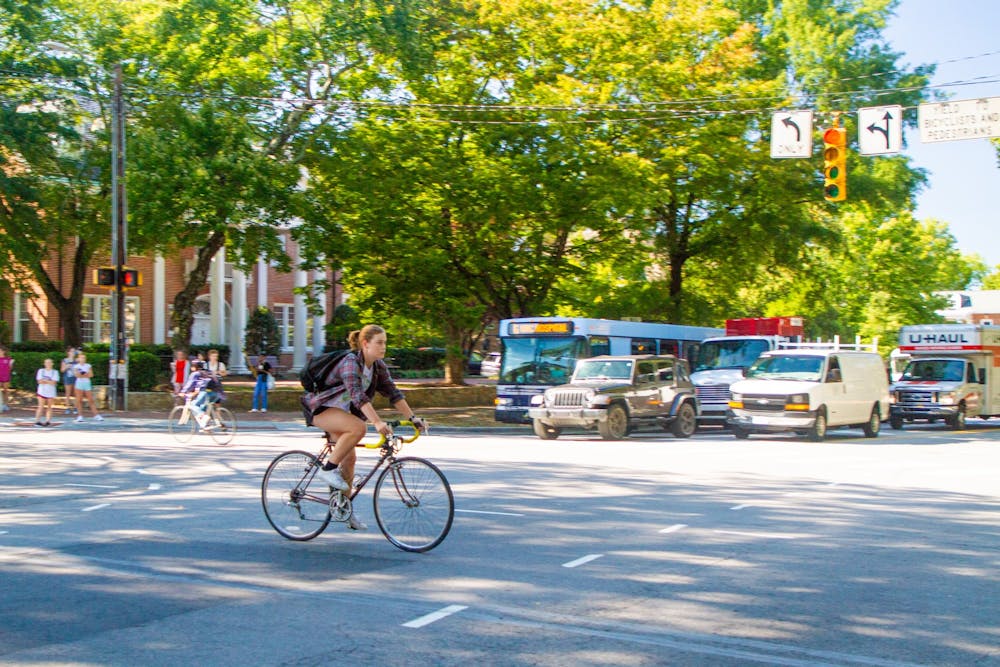The intersection of Fordham Boulevard and Willow Drive is treacherous for pedestrians.
With three lanes of cars zooming down Fordham at more than 50 miles per hour, narrow sidewalks and limited crossing opportunities, it isn’t uncommon to see people jumping out of the way to avoid being hit by a car.
Dangerous crossings like Willow Drive are present all over Chapel Hill given the prioritization of vehicular travel. This is especially evident on state-owned roads like Fordham Boulevard as the North Carolina Department of Transportation has the power to set policy for travel along these roads.
State ownership also makes the bar for enacting safety changes — such as adding crosswalks, pedestrian flashing beacons or widening sidewalks on local roads — much higher. This is reactive policy-making, meaning something tragic has to happen for solutions to be implemented.
The Town has the opportunity to change this going forward. At this Wednesday’s Town Council meeting, council members will hear a presentation about enacting Vision Zero, a commitment to eliminating traffic fatalities and serious injuries.
Vision Zero is far from perfect, but it is a preventive step to push the Town toward more proactive safety measures on its streets. It formalizes the notion that pedestrian safety is more important than car travel. It also includes practical policies like working to slow car speeds and minimizing crossing distances for pedestrians.
Between 2015 and 2019, Chapel Hill had 71 pedestrian crashes at intersections, resulting in three deaths and five serious injuries, according to the most recent available crash data from the North Carolina Division of Bicycle and Pedestrian Transportation. It took two pedestrian deaths at separate intersections for the Town to build safer crosswalks on Martin Luther King Jr. Boulevard, which included flashing beacons and pedestrian islands.
It’s easy to look at the data as just numbers, but these are people with families and friends whose lives should have been spared through better street design and preventative policy.
Those numbers, as sad as they are, still don’t tell the whole story. Mere misses don't show up in the crash data, but they still show the lack of safety at an intersection.



